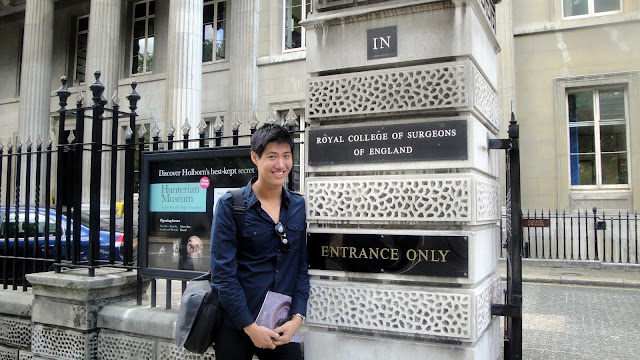Are you afraid of the dark? Are you afraid of the dentist? The former may have been a favorite TV show of yours from childhood (Nickelodeon, anyone?), but unfortunately the latter is a negative no-brainer to many. We all know of some friends or family members who really despise their visits to the the dentist and will do anything in their power to make these bi-annual visits as brief as possible.
Since writing
my post last week on the new device that eliminates the sound of a dental drill, I've been doing a lot of thinking on why some people have such an extreme fear of the dentist. Let's just call this
dental phobia. And as I've been continuing my shadowing and work at my awesome dentist's office this month, although I haven't encountered any patients who seem to have any apparent dental phobia, I do notice some general trends including hand-clasping, eye-closing, legs-crossing, and (just once) chair gripping - even during general cleanings! These behaviors are usually secondary to some of the things you might expect a patient with dental phobia to exhibit.
A fear of dental visits may pose a major issue in achieving and maintaining good oral health. Often, it just takes one negative experience, usually from childhood, for an individual to develop a dental phobia that may last a lifetime. If you had to have seven baby teeth pulled out when you were in the second grade because of the cavities that formed due to your bad childhood brushing habits (and because of all those Hershey's, Reese's Pieces, and Kit Kat bars you gulfed down in one sitting that day after Halloween), it makes sense that your dental phobia likely has its roots in the unpleasant and painful dental experience that ensued. A few numbing shots to your gum and a fountain of your own tears probably didn't help your newly developed phobia either.
But for adults, a number of other factors besides the physical often explains a dental phobia.
The sky-high costs of certain procedures (especially if you don't have insurance or if your carrier doesn't fully cover certain procedures), the disruption of your normal work day, the need for control (especially of a part of your body where you otherwise have 100% control of what goes in and out), and even antiseptic odors can contribute to such anxieties. Self-consciousness and general anxieties may also be possible factors contributing to this fear, in addition to a combination of higher order social and psychological factors.
As you can imagine, a modern-day dentist also assumes the role of a psychologist in ensuring that patients have a pleasant experience while receiving the utmost oral care. Interestingly, some dental schools like UCLA and UCSF dental actually require that all applicants take an introductory psychology course.
Ultimately, while a comfy chair and your favorite TV show playing on the screen may help you temporarily forget about your dental phobia, the most important step in overcoming your fear of the dentist's office begins with good communication between you and your oral care professional.
Never be afraid to ask questions before, during (procedure-permitting), and after a procedure!
For those of you who are more cosmetically-inclined, just imagine how great your teeth will look when all's said and done!
Eric































